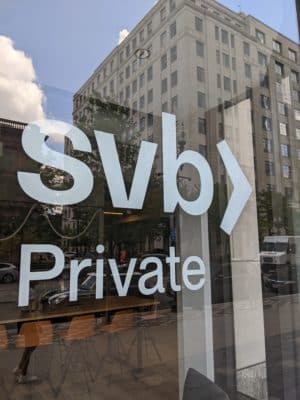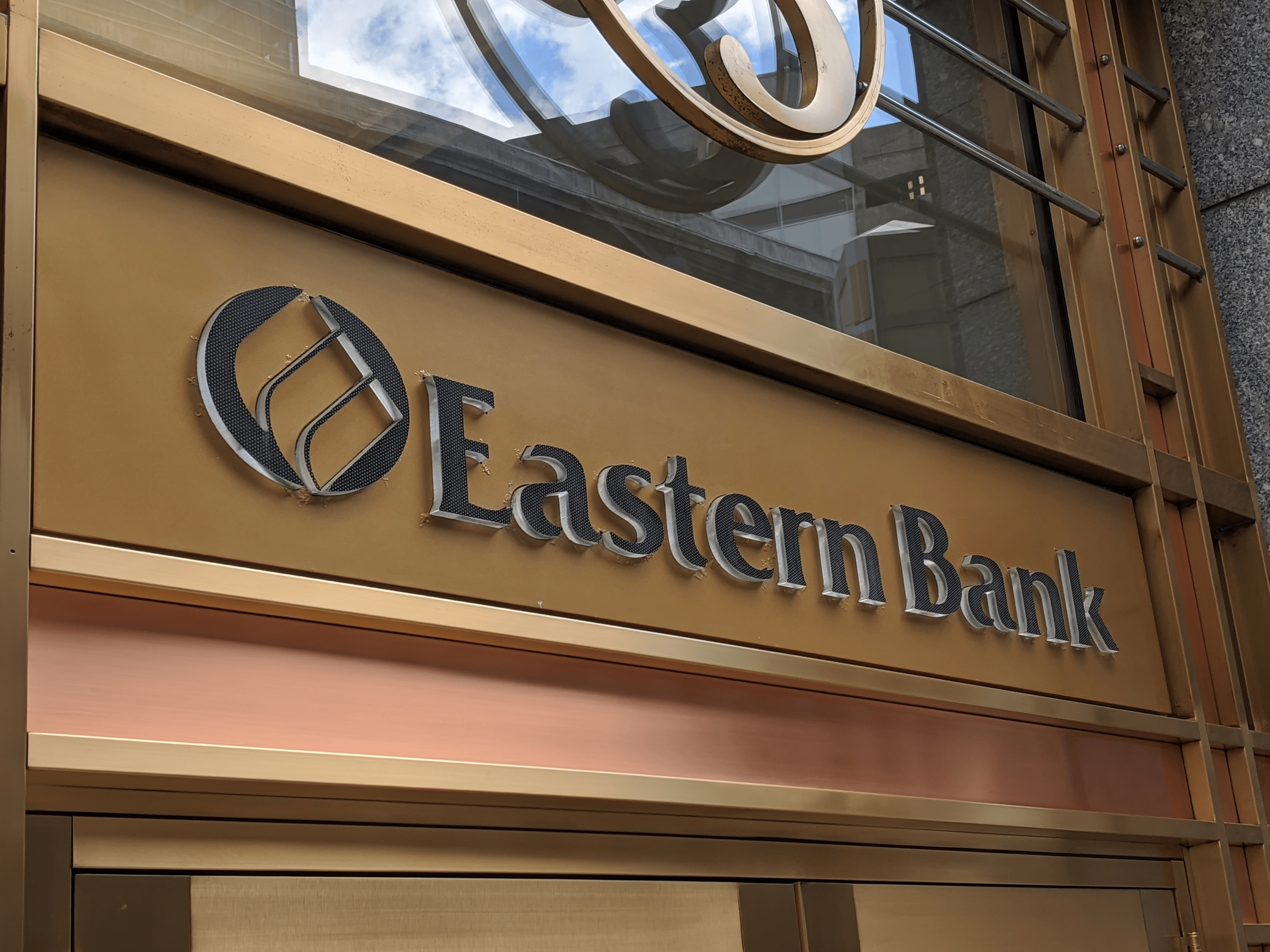
The offices of SVB Private, as Boston Private Bank & Trust was rebranded following its purchase by Silicon Valley Bank, in Boston's Back Bay. Banker & Tradesman file photo
The U.S rushed to seize the assets of Silicon Valley Bank on Friday after it experienced a run on the bank, the largest failure of a financial institution since Washington Mutual during the height of the financial crisis more than a decade ago.
Silicon Valley, the nation’s 16th largest bank and one with a major presence in Massachusetts after buying Boston Private Bank in 2021, failed after depositors – mostly technology workers and venture capital-backed companies – hurried to withdraw money this week as anxiety over the bank’s balance sheet spread.
SVB was heavily exposed to tech industry and there is little chance of contagion in the banking sector similar to the chaos in the months leading up to the Great Recession more than a decade ago. The biggest banks – those most likely to cause a systemic economic issue – have healthy balance sheets and plenty of capital.
“All insured depositors will have full access to their insured deposits no later than Monday morning, March 13, 2023,” the federal regulator said. “The FDIC will pay uninsured depositors an advance dividend within the next week. Uninsured depositors will receive a receivership certificate for the remaining amount of their uninsured funds. As the FDIC sells the assets of Silicon Valley Bank, future dividend payments may be made to uninsured depositors.”
Social media users posted many photos Friday of SVB customers lining up at the bank’s now-closed branches in many of Boston’s wealthiest communities. All SVB branches will reopen Monday, the FDIC said, and follow normal business hours, and online banking and other services will resume at that time. The FDIC said SVB’s officials checks will continue to clear and said borrowers should continue to make their payments as usual.
The $209 billion-asset bank had around $175.4 billion in deposits when it was closed, but the FDIC said it was currently unsure how much exceed its $250,000 per-account insurance cap. Customers with accounts in excess of $250,000 should contact the FDIC toll-free at 1-866-799-0959.
Failure Caught Observers Unawares
There has been unease in the banking sector all week and the collapse of Silicon Valley pushed shares of almost all financial institutions lower Friday, shares that had already tumbled by double digits since Monday.
Silicon Valley Bank’s failure arrived with incredible speed, with some industry analysts on Friday suggesting it was a good company and still likely a wise investment. Silicon Valley Bank executives were trying to raise $1.75 billion in capital early Friday and find additional investors. However, trading in the bank’s shares was halted before the opening bell due to extreme volatility after tumbling 70 percent.
Shortly before noon eastern, the FDIC moved to shutter the bank. Notably, the FDIC did not wait until the close of business to seize the bank, as is typical in an orderly wind down of a financial institution. The FDIC could not immediately find a buyer for the bank’s assets, signaling how fast depositors had cashed out. The bank’s remaining uninsured deposits will now be locked up in receivership.
As its name implied, Silicon Valley Bank was a major financial conduit between the technology sector, its founders and startups as well as its workers. Hundreds of companies held their operating capital with the bank, and it was seen as good business sense to develop a relationship with Silicon Valley Bank if a founder wanted to find new investors or go public.
“We saw building a relationship with Silicon Valley Bank as a logical step, given their reach,” said Ashley Tyrner, CEO of FarmboxRx, a company that delivers food as medicine to Medicaid and Medicare recipients. While Tyrner has money in other banks and can make payroll, she said a good portion of her business’ profits are now locked up with the bank.
Bank Hit Hard by Fed Hikes
But Silicon Valley’s connections to the tech sector rapidly became a liability. Technology stocks have been hit hard in the past 18 months after a growth surge during the pandemic and layoffs have spread throughout the industry.
At the same time, the bank was hit hard by the Federal Reserve’s fight against inflation and an aggressive series of interest rate hikes to cool the economy.
As the Fed raises its benchmark interest rate, the value of bonds, typically a stable asset, start to fall. That is not typically a problem as the declines lead to “unrealized losses,” or losses that are not counted against them when calculating the capital cushion than banks can use should there be a downturn in the future.
However, when depositors grow anxious and begin withdrawing their money, banks sometimes have to sell those bonds before they mature to cover that exodus.
That is exactly what happened to Silicon Valley Bank, which had to sell $21 billion in highly liquid assets to cover the exodus of deposits. It took a $1.8 billion loss on that sale.
“There are starting to be cracks that are appearing,” said Brent Schutte, chief investment officer at Northwestern Mutual Wealth. “SVB is a warning for the Fed that their actions are beginning to have an impact.”
Tyrner said she’s spoken to several friends who are backed by venture capital. She described those friends as being “beside themselves” over the bank’s failure. Tyrner’s chief operating officer tried to withdraw her company’s funds on Thursday, but failed to do so in time.
“One friend said they couldn’t make payroll today and cried when they had to inform 200 employees because of this issue,” Tyrner said.
Banker & Tradesman staff writer James Sanna and AP staff writer Stan Choe contributed to this report.
This is a breaking news story and will be updated.
This story has been corrected to reflect that Silicon Valley Bank was not a member of the Massachusetts Depositors Insurance Fund, which ensures member banks’ deposits above the FDIC’s $250,000 threshold. SVB depositors are not covered by DIF insurance.






